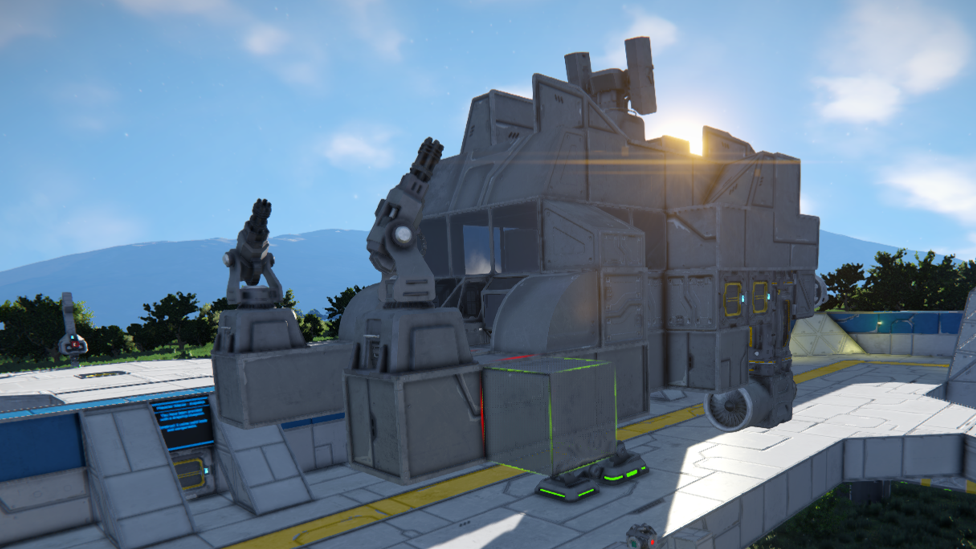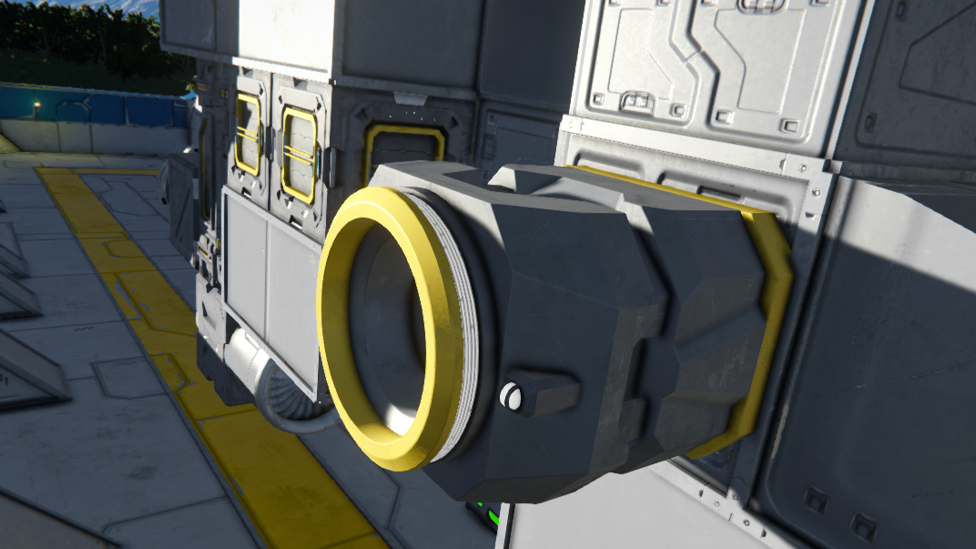Space Engineers: How to Build a Small Ship
But first, check out this awesome Space Engineers server hosting. Continue reading if you’ve already done so!
#1 The Humble Landing Gear

Make Your Own Space Engineers Server
Our journey starts with the landing gear, a sometimes disregarded yet crucial element. Think about a magnificent sculpture or a tall building. Your ship need a strong basis, a foundation upon which all else rests, just like these constructions. Your spaceship will have that very basis thanks to the landing gear.
Choose a flat area to serve as your "workshop" to begin construction. This might be a pre-existing platform or any flat surface found in the game. Place your landing gear once you've discovered the ideal location. This will serve as the ship's anchor, keeping it steady as you add more components. The soundness of your foundation will have a direct impact on the success of your build, so don't undervalue its significance.
#2 Choosing Your Environment
Let's talk about your surrounds now that you've laid your foundation. A good engineer must select the ideal setting for developing and testing their spaceship, much like an artist could select their studio. You have a wide range of options given the variety of celestial bodies and conditions in Space Engineers.Here is some knowledgeable counsel: begin your design process in a serene, empty place. The tranquility and openness of the workspace environment offer the ideal environment for clear-headed and unrestricted creation. Additionally, creating in space enables you to comprehend the physics and dynamics of zero gravity, aiding in the engineering of your ship for the best possible space flight.
It's time to test your ship in various conditions once you have the basic concept in place. Test your ship's capabilities on several worlds, including lunar, extraterrestrial, and earthlike environments. Each location has its own specific set of characteristics, giving you useful information about the adaptability and toughness of your ship.
#3 Crafting Your Ship's Design
Designing your ship is the next step in the process, which is also the most enjoyable and creative. With a sturdy foundation and a conducive environment in place, now's the time to unleash your imagination! The possibilities are boundless, whether you're inclined towards a massive, intricate model or a minimalist, functional one.
Don't worry if you're just rolling out new to the game. You may learn the fundamentals of tiny ship design from a variety of online resources. There are many detailed guides that will simplify the process for you, demonstrating how to incorporate and arrange various spaceship sections, achieve weight balance in your ship, and more.
Consider broadening your horizons as your confidence and experience grow. Consider creating a specific type of ship, such a mining ship or a fighter ship. Diversifying your skill sets not only improves the fun of the game but also gets you ready for harder challenges.
#4 The Role of Thrusters and Gyroscopes
The time has come to put your ship's concept into action. And how is this accomplished? use the force of thrusters and the gyroscopes' ability to give equilibrium. Your ship will be able to move and travel across space thanks to these components.You should outfit your ship with atmospheric thrusters if you wish to start out in an environment similar to Earth. For upward movement, aim for 6–8 tiny atmospheric thrusters. To enable your spaceship to maneuver left and right, add 2-4 thrusters to each side. Attach six thrusters pointing front and backward to power movement in both directions.
Your ship need both thrusters and gyroscopes. This enables you to skillfully navigate and stabilize your spaceship by allowing rotation across its three axes (pitch, roll, and yaw). For tiny ship designs, installing 1-2 gyroscopes on your vessel should be sufficient.
#5 Adding a Connector
The connector is the final component you should think about for your spacecraft. This crucial component serves as the entry point for your ship to other entities, such as stations or bigger ships. With a connector, you can efficiently transport objects and materials to and from your ship, facilitating cargo loading and unloading.Just attach a connector to your ship's prow. This will give people a useful and effective means to communicate with asteroid bases, space stations, and other structures in the Space Engineers universe. Your little spacecraft is now not just maneuverable and steady, but also operational.

FAQ
How does the environment selection impact the design of the ship?
Designing your ship includes picking the appropriate environment. While designing in space can offer a clear, uncluttered work environment, it's also critical to consider how the ship will function in other surroundings, like as planets or moons.
In Space Engineers, each celestial body has an own gravitational pull and atmospheric pressure. A spacecraft, for instance, would find it difficult to maneuver in a planet's atmosphere if it only possesses ion thrusters, which are most effective in space. A ship with atmospheric thrusters, on the other hand, might not function well in space. Testing your spacecraft in various settings is therefore essential during the design phase.
Can I design my ship based on real-world spacecraft?
Absolutely! From its physics engine to its construction mechanisms, the video game Space Engineers takes pleasure in its realism. When creating your ship, feel free to draw inspiration from existing spacecraft. Just keep in mind that the physics of the game might not perfectly match those of reality.
For instance, since there's no gravitational pull in space, real spaceships don't require "up" and "down" rockets. However, you frequently require these in Space Engineers in order to combat the game's artificial gravity.
What is the importance of balancing thrusters and gyroscopes in my ship?
A ship's thruster and gyroscope balance is comparable to a symphony's flawless harmony. It involves making sure your ship can move and navigate easily under a variety of circumstances. The quantity and location of your ship's thrusters determine its speed and agility.
Your spaceship can navigate more effectively in any direction if equipped with an even spread of thrusters for movements all around—up, down, left, right, forward, and backward. Gyroscopes, on the other hand, are essential for rotating movements. They enable your ship to properly navigate and maintain stability throughout maneuvers. Therefore, the secret to a successful ship design is a well-balanced combination of thrusters and gyroscopes.
Final Thoughts
In Space Engineers, creating your own ship requires experimentation, imagination, and learning. It involves comprehending the fundamentals, putting your knowledge to use, and continuously testing and improving your creations. You get closer to building the ideal spacecraft with each step you take. Keep in mind that your imagination is your sole constraint in the domain of space engineers. So go forth and conquer the stars, engineers!Make Your Own Space Engineers Server
Copyright 2019-2025 © ScalaCube - All Rights Reserved.